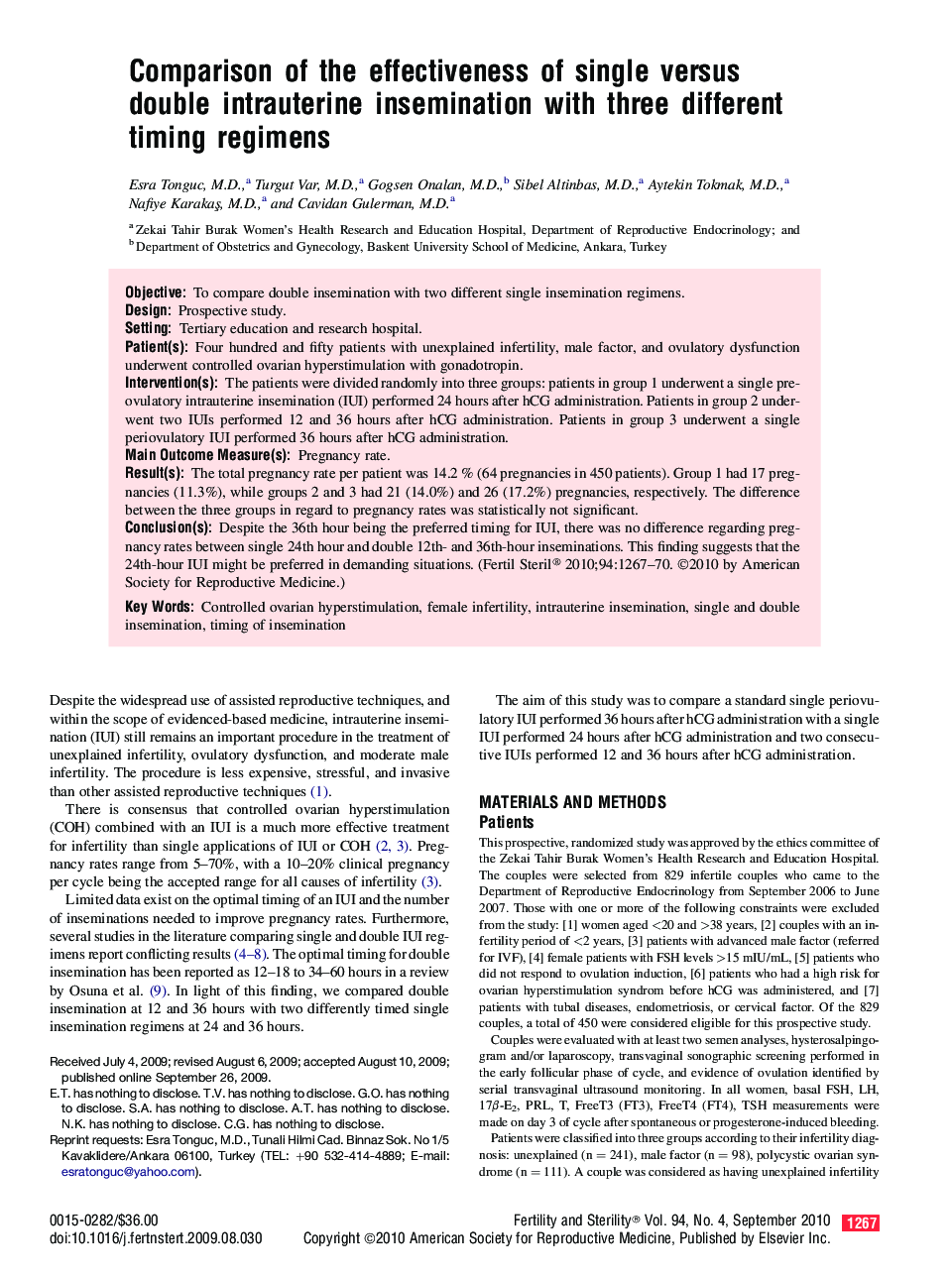| Article ID | Journal | Published Year | Pages | File Type |
|---|---|---|---|---|
| 3938132 | Fertility and Sterility | 2010 | 4 Pages |
ObjectiveTo compare double insemination with two different single insemination regimens.DesignProspective study.SettingTertiary education and research hospital.Patient(s)Four hundred and fifty patients with unexplained infertility, male factor, and ovulatory dysfunction underwent controlled ovarian hyperstimulation with gonadotropin.Intervention(s)The patients were divided randomly into three groups: patients in group 1 underwent a single preovulatory intrauterine insemination (IUI) performed 24 hours after hCG administration. Patients in group 2 underwent two IUIs performed 12 and 36 hours after hCG administration. Patients in group 3 underwent a single periovulatory IUI performed 36 hours after hCG administration.Main Outcome Measure(s)Pregnancy rate.Result(s)The total pregnancy rate per patient was 14.2 % (64 pregnancies in 450 patients). Group 1 had 17 pregnancies (11.3%), while groups 2 and 3 had 21 (14.0%) and 26 (17.2%) pregnancies, respectively. The difference between the three groups in regard to pregnancy rates was statistically not significant.Conclusion(s)Despite the 36th hour being the preferred timing for IUI, there was no difference regarding pregnancy rates between single 24th hour and double 12th- and 36th-hour inseminations. This finding suggests that the 24th-hour IUI might be preferred in demanding situations.
